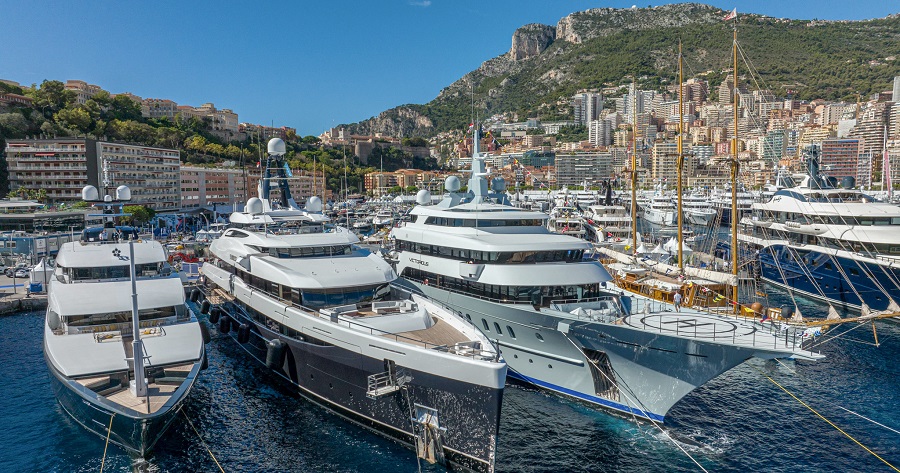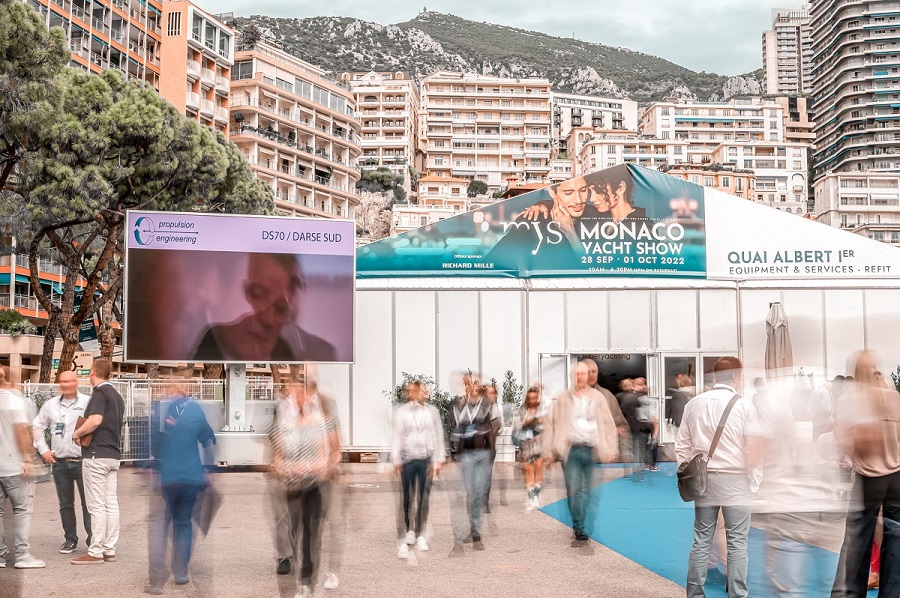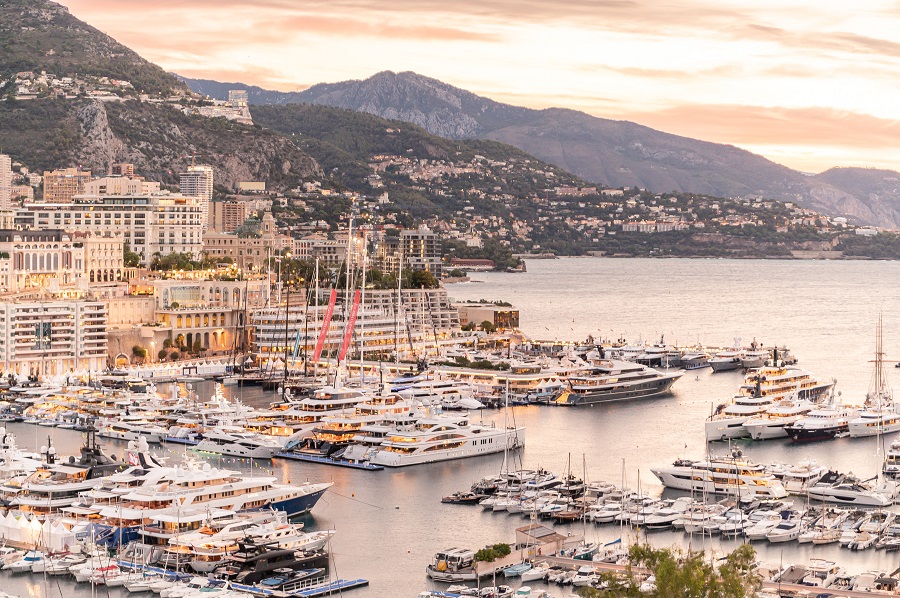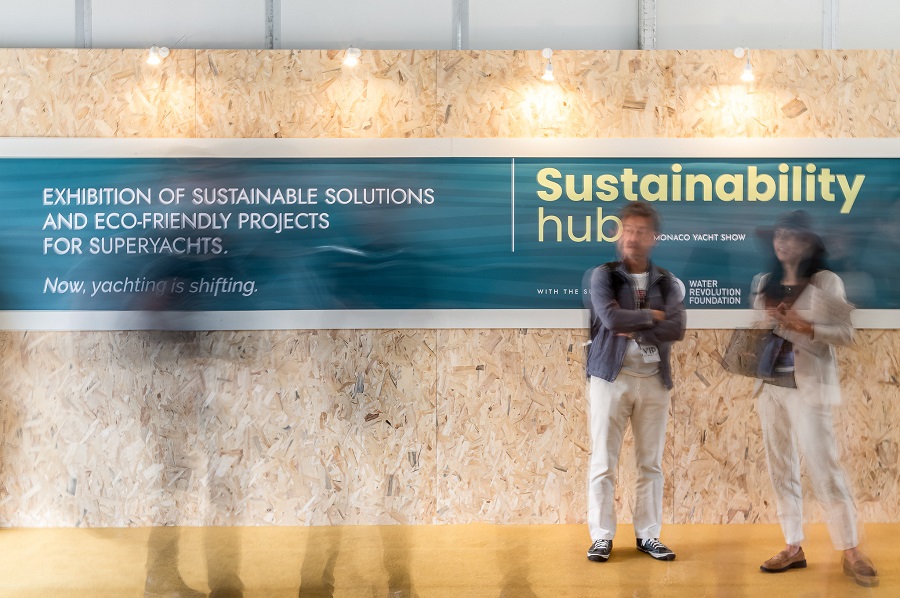 alt="Monaco Yacht Show announces carbon-neutrality plan"/>
alt="Monaco Yacht Show announces carbon-neutrality plan"/>
Monaco Yacht Show organisers recently hosted a webinar exclusively for exhibitors and show suppliers to discuss its Carbon Neutrality Transition Plan. The presentation emphasised the show’s commitment to sustainability and ongoing efforts to minimise its environmental impact.
With the implementation of a comprehensive three-phase transition plan, organisers are dedicated to achieving carbon neutrality, actively involving all exhibitors and suppliers in the process. The presentation was hosted by the Monaco Yacht Show and auditing agency Nadeis, which supports the show in its sustainability initiatives.
Several topics were addressed during the presentation. Introduction to the carbon neutrality transition plan revealed that the Monaco Yacht Show aims to reduce CO2 emissions by 60 per cent by 2025 compared to 2022. This aligns with the Principality of Monaco’s low-carbon trajectory, aiming to achieve carbon neutrality by 2050.

A presentation of Phase One and last year’s results discussed the approach and methodology used to calculate the show’s carbon footprint. Data collection at last year’s edition was conducted from various stakeholders including visitors, exhibitors, service providers and yacht captains, with organisers stressing that “accurate data collection is crucial for improving carbon footprint estimation”.
The outlook for Phase Two and Phase Three revealed the vision for the next stages of the transition plan. The phases are focused on future measures and upcoming initiatives to further reduce greenhouse gas emissions and promote sustainability.
Overall, the carbon footprint calculation for the Monaco Yacht Show reveals important data across three areas. Scope One represents direct emissions that the show owns or controls and the largest emission in this scope came from the refrigerants used in air-conditioning machines, amounting to 48.5 tonnes.

Scope Two includes indirect emissions from electricity and water consumption, which were relatively low, with usage of water amounting to 0.1 tonnes of emissions and electricity contributing 2.4 tonnes.
Scope Three covers other indirect emissions from activities not owned or controlled by MYS, such as exhibitors, suppliers, waste and transportation. The emissions in this scope were significant, with notable contributions from exhibitors, visitors, waste and service providers.
Employees contributed one tonne, which is equivalent to 190 round trips from Paris to Bordeaux by train. Visitors generated 6,608 tonnes, equivalent to 6,600 round trips from Paris to New York by air (extrapolated data).
Waste amounts to five tonnes, equivalent to 44,000 plastic cups. Service providers contribute 39 tonnes, equivalent to 741 years of power consumption of a TV (extrapolated data). Exhibitors generated 77 tonnes, equivalent to driving 620,000km in a diesel car (extrapolated data).

The results underscored the need for comprehensive efforts to reduce emissions in all scopes, promoting sustainable practices and environmental responsibility throughout the Monaco Yacht Show.
Organisers emphasised the importance of collaboration with partners, suppliers and customers to reduce the show’s carbon footprint and waste. It highlighted the benefits of calculating and managing the carbon footprint of events, such as demonstrating commitment to climate change and accessing new markets.
The show’s commitment to sustainability extends to both the preparation of the event and the four-day show itself. In 2022, the show introduced a Sustainability Hub, with the aim of raising awareness and promoting sustainable practices among exhibitors and visitors.
This year’s Monaco Yacht Show will be held in Port Hercule from September 27-30 and is again expected to host about 120 superyachts – including about 40 world premieres – and around 50 luxury tenders. The superyacht fleet boasts an average length of 50 metres and includes megayachts exceeding 100m.
www.monacoyachtshow.mc